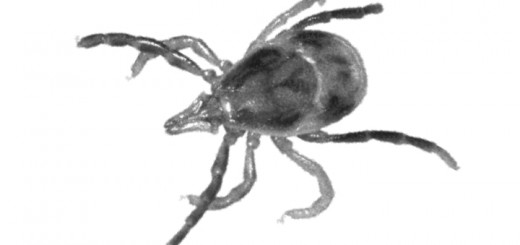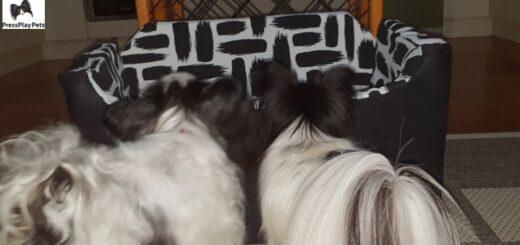You and your dog are in the car heading off for a fun filled adventure together. Then you notice he is not looking too happy, in fact he is starting to drool. Suddenly he deposits his entire breakfast all over the car seat!
Your fun filled day is now filled with you cleaning up the mess, while your dog is not only feeling miserable he is also starting to quickly associate the car with feeling sick.
Motion sickness in dogs is a common, although frustrating condition.
Let’s explore the signs of motion sickness, what is motion sickness, how to desensitize your dog to the car and look at some non-drug treatments and remedies available.
Signs of Motion Sickness:
- Yawning
- Uneasiness
- Listlessness
- Whining
- Pawing The Ground/Digging
- Circling/Pacing
- Drooling
- Vomiting
What Is Motion Sickness:
Motion sickness is most commonly seen in puppies and young dogs rather than older dogs. This is because the inner ear drum used for balance is not fully developed.
Many dogs outgrow motion sickness once the ears are fully matured, however some do not. This can simply be that some dogs, like some humans, will always feel sick during motion. However, in most cases it is due to the dogs association with car travel and vomiting. Basically he worries himself to the point of sickness.
Before we cover desensitization, treatments and remedies, you need to make the environment as comfortable as possible.
A Comfortable Environment:
Face your dog in a forward position where he is able to see out the window is ideal. If your dog is going to sit up front on the passenger seat, keep in mind that air bags can be a potential hazard to dogs in an accident. Many people prefer that their dog sit in the back, a raised car seat or crate is a good option. It also has the added benefit of containing vomit!
Opening the car windows a couple of inches while the car is in motion will reduce the air pressure inside the car, which can affect balance in the ear drums. Gentle cool air can also be of benefit as hot stuffy cars contribute to feelings of nausea.
Now that you have made the environment as comfortable as possible, let’s move onto desensitization.
Desensitization:
If your dog has been sick recently in the car, give him a break from the car for a week or two before starting the desensitization process.
Place your dog in the car with the engine turned off. You will need to do this in short intervals say 5-10mins everyday for a few days until you notice your dog is becoming calm and relaxed in the car. Not until then can you progress onto turning the engine on and the car remaining stationary. Again you may need to do this over a short period of time until you notice your dog is calm and relaxed again.
Once you have successfully had the engine turned on and your dog is calm, back out of the driveway and back in again. Repeat until your dog is calm and relaxed.
Finally your dog is showing calm and relaxed behaviour in the car. So now it is time to go on a very short drive, somewhere they enjoy such as the local park. Facing your dog in a forward position where he can see out the window. You can also use small treats to distract him from the motion (Not so many that it makes him feel sick!). A familiar toy or blanket in the car as comfort can also help.
Remember always give your dog lots of praise!
Non-Drug Treatment and Remedies:
There are a number of medications available that your veterinarian can prescribe, along with-over-the counter medications. Some dog owners are reluctant to medicate their dog, preferring a more natural approach where possible.
Let’s look at some natural options that many people claim have worked for their dogs, either individually or combined:
- Changing Vehicles (This can help reduce the associated conditioning a dog has developed to a certain car)
- Familiar Blanket & Toy (This helps to reduce anxiety with a comforting scent)
- Empty Tummy (Helps to reduce the need to vomit)
- Flower Essence Remedies (Given 20 minutes prior to travel can help reduce stress and fear)
- Ginger Nut Biscuits/Crystallized Ginger (Given prior to travel can help to reduce nausea)
- Thunder Shirt (firm fitting baby t-shirt/singlet or “Thunder Shirt” is said to reduce anxiety. Similar to a baby wrapped in a blanket)
- Ear Strokes (Long slow strokes from the base of the skull to the ear tips may help balance the inner ear)
- Massage (A whole-body massage can relieve tension, particular focus on above and medial to the dog’s wrist, the area below and lateral to the knee and along the spine and the belly (which will include most of the major points for activating organ systems) can calm the gastrointestinal tract.
Remember every dog is an individual. There is no one remedy that fixes all. You will most likely have to go through a long and tedious process of elimination and/or combination of remedies to see what “fits” your pooch.
My Dog Still Has Motion Sickness:
Dogs that do not outgrow motion sickness and do not respond to conditioning and natural therapies may benefit from the use of medication. There is a variety of veterinary prescribed medication and over-the-counter medications on the market that may decrease your dog’s motion sickness symptoms.
It is always recommended you consult with your veterinarian before administering any over-the-counter treatment for dog motion sickness.
Pressplay Pets strongly recommends the use of a dog harness or crate in vehicles to ensure the safety of you and your beloved dog. The laws regarding restraint of dogs in or on vehicles vary between countries and their states/territories. To avoid the risk of a potential fine, we suggest you check with your local government/council for further details.
Read about Indy’s progress with finding his best “fit” for motion sickness.
Author Bio: Nikki is pack leader at Pressplay Pets, a blog for the modern age pet parent interested in health & care, news, reviews & personal accounts of unconditional love & at times heartfelt pain of pet parenting. She is also proud mum to cute and cheeky Papillons ‘Amber’ and ‘Indy’ and one crazy Rainbow Lorikeet named ‘Ralph’! Follow my Facebook and Twitter.
Pressplay Pets a blog for the modern age pet parent interested in health & care, news, reviews & personal accounts of unconditional love & at times heartfelt pain of pet parenting!
Follow Us!




GREAT article! Wonderful suggestions. I wish you had share buttons for each article so your articles can be sent to my social media sites by simply clicking on a link. I will put your link on my facebook and Twitter.
Thank you for your suggestion of a share button, I will see what I can come up with. I do not have a Twitter account, however more than happy to do the same for you on my facebook 🙂